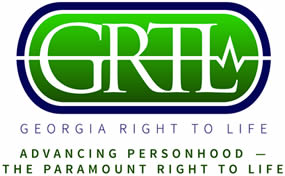 June 2018 – Article 1:
June 2018 – Article 1:
As with many scientific breakthroughs, gene editing has a helpful side and a dangerous side; a moral side and an evil side.
While the rapidly-growing technique promises the potential to prevent, or cure, inheritable diseases, it also threatens to fundamentally change what it means to be a human being created in the image of God.
There are two types of gene editing: therapeutic gene editing and reproductive gene editing.
Both procedures involve the use of “CRISPR/Cas9.” CRISPR stands for Clustered Regularly Interspaced Short Palindromic Repeats. Cas9 is a protein.
In the process, Cas9 acts as a pair of “molecular scissors” that snip strands of DNA to remove faulty genetic material creating space for properly functioning genes to be inserted. CRISPR is a kind of genetic GPS that guides the scissors to the precise location.
Therapeutic Gene Editing Risks
Therapeutic gene editing involves altering a person’s genes to treat or prevent a disease from developing. It replaces a faulty gene, or adds a good gene, in an attempt to treat such conditions as: cystic fibrosis, muscular dystrophy, cancer, heart disease, and diabetes.
There are several possible sources for healthy genes—some acceptable, some evil. They include:
- A person’s own DNA.
- Cells created in a culture, which can include: adult stem cells, embryonic stem cells, or an existing cell line from aborted fetal tissue.
- DNA manufactured in a laboratory.
In short, there is an ethical way to obtain healthy genes, but unfortunately that is not always the chosen method.
Researchers typically use a virus which acts like a carrier, called a vector, to transport the new gene to the targeted organ.
Typical techniques employed include:
- Replacing mutated (abnormal) genes.
- Repairing mutated genes.
- Making diseased cells more evident to a person’s immune system.
While promising, the process presents risks, such as:
- The immune system rejecting a new gene as a virus.
- Targeting the wrong cells.
- Causing infection by a virus.
- Possibly causing a tumor.
Another drawback is that repeated treatments are often required because cells die and must be replaced.
The changes only affect the person who receives them and are not passed on to future generations.
Earlier this year, the National Institutes of Health launched the $190 million Somatic Cell Genome Editing program in the hopes of developing high-quality tools for performing safe and effective gene editing in humans and making those tools widely available to the research community to reduce the time and cost of developing new therapies.
The Dark Side of Reproductive Gene Therapy
While Reproductive gene therapy can be beneficial, it also has a dark aspect.
The goal is to prevent children from inheriting diseases and passing them on to future generations, but that research involves creating and destroying human embryos.
For example, last year scientists at Oregon Health and Science University announced they had successfully edited genes in human embryos aimed at preventing babies from inheriting diseases.
The problem: they created 58 embryos – 58 innocent human babies- – that were destroyed after the tests were complete.
In addition to destroying children in the name of research, pro-life activists assert the process will open a Pandora’s Box of abuses to create “designer babies” that will ignore the inherent value and dignity of pre-born children, as well as alter the God-ordained Personhood of humanity.
The technique could be used to select a number of attributes for a child such as: gender, looks, personality, intelligence, and physical prowess.
Parents would be able to choose their baby’s emotional, mental and physical structure to suit their personal desires just because they think it’s a good idea.
In addition to altering the Personhood of that child, any changes to her DNA will be passed on to future generations.
“Our dignity as human beings is assigned by the God who creates us,” said GRTL President Ricardo Davis. “Cooking up designer babies in a laboratory is both immoral and dangerous.”
Even the left-leaning Open Global Rights organization sees the dangers.
“Gene editing for human reproduction carries huge social risks. It has the potential to threaten the health and autonomy of future generations, to exacerbate existing social disparities, and to lay the basis for a new market-based eugenics that would fuel discrimination and conflict,” the group wrote.
They added: “Imagine a world where wealthy parents could purchase genetic enhancements to give their children real or alleged advantages, where children’s futures were thought to be determined by their genes, and where babies were labeled at birth as ‘good’ or ‘bad’ based on their DNA. What would be the implications for human rights, and for the right of children to decide their own futures?”
An article published by the pro-life Center for Bioethics and Culture Network (CBC) echoed a similar warning.
“Aldous Huxley in his novel Brave New World foretells of future authoritarian regimes using technology similar to CRISPR to create a permanent class of underlings meant to serve political elites. In the novel, manual laborers are edited to have inferior intelligence and to become more receptive to commands,” the article said.
These are complex issues and will continue to present both opportunities and challenges to those who value the sanctity of human life. In addition, the secular media will continue to downplay, or ignore, the moral and ethical issues involved.
Pro-life supporters are encouraged to become knowledgeable about these topics and take advantage of opportunities to discuss them with friends and associates.
Sources: ft.com; ncats.nih.gov; bionews.org.uk; theverg.com; open.edu; genetherapynet.com; sciencemag.org; nytimes.com; prophecynewswatch.com; openglobalrights.org; cbc-network.org; mayoclinic.org; scientificamerican.com.
By Wayne DuBois
Georgia Right to Life
Media Relations Advisor
